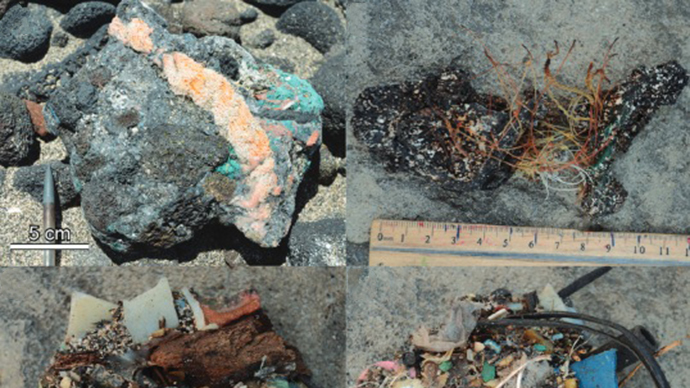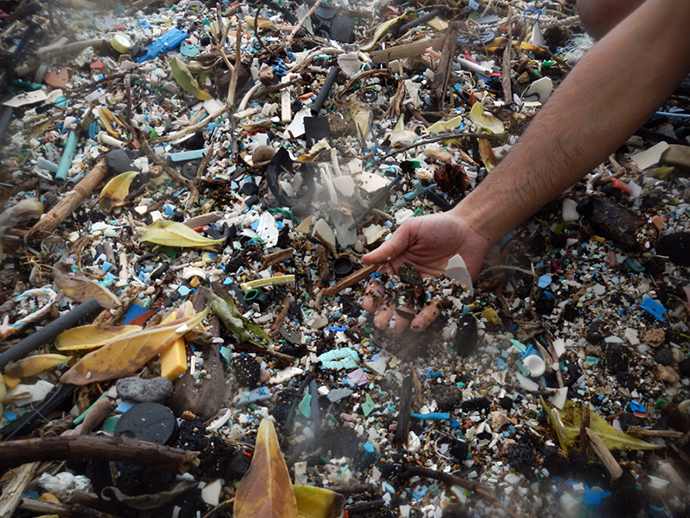‘Plastic stones’ found at remote Hawaii beach

When humanity is extinct, alien researchers studying Earth may find evidence of our presence here in the form of plastic rocks buried underground. This is what a new study of “plastiglomerates” suggests in Hawaii.
Plastiglomerate is a fancy scientific word to describe melted plastic, which mixed with basalt rocks, sand, wood chips, charcoal and other stuff forms a new kind of stone. A team of researchers from Canada and the US found plenty of those at the remote Kamilo Beach on the southeast shore of Hawaii’s Big Island.
The scientists sampled 21 sites at the 700-meter-long beach and discovered 167 plastiglomerate fragments ranging in size between 2 centimeters and 22.5 centimeters, they reported in a paper published in GSA Today.
The source of the Frankenstein junk is campfires, the study says. Kamilo Beach is located some 12 kilometers from the closest paved road and can only be reached by four-wheel drive vehicles. So it’s rarely cleaned, but people who do get to it burn fires for warmth and cooking. Plastic melted by the heat adheres to basalt rocks, sand, coral pieces and other natural objects, forming the “plastic stones.”

All sorts of man-made plastic was found on the beach and may end up as plastiglomerate, the report said.
“Typical plastic debris include derelict fishing gear, including nets, oyster spacer tubes and buoys; food and drinking containers; resin pellets; and abundant multicolored fragments or ‘plastic confetti’,” the latter being broken remains of things like plastic containers.
Given the abundance of plastic waste in the world, the team says there are many plausible scenarios how “plastic stones” can form without any extra help from humans.
“Although campfire burning is responsible for the plastiglomerate on Kamilo Beach, it is conceivable that the global extent of plastic debris could lead to similar deposits where lava flows, forest fires, and extreme temperatures occur,” the researchers wrote.
Plastic waste is mostly associated with the harm it causes to the environment, accumulating in the oceans and getting animals tangled up in nets or choking on bottles. But the study distinguishes plastiglomerate by its potential scientific use. It is denser than common plastic debris and is more prone to burial. And the slow degradation would mean it would be preserved for decades or centuries.
“This anthropogenically influenced material has great potential to form a marker horizon of human pollution, signaling the occurrence of the informal Anthropocene epoch,” the study said.
Anthropocene is a term some researchers suggests for a time period since approximately mid-18th century, when humanity became populous and technologically advanced enough to significantly affect environment on the global scale. Proponents say it’s distinct from the Holocene geological epoch, the time since the last Ice Age ended some 11,700 years ago.














